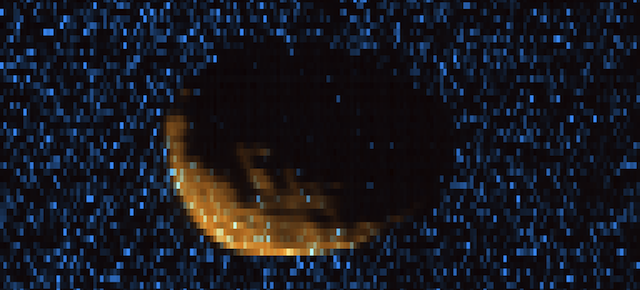 NASA scientists are closer to solving the mystery of how Mars’ moon Phobos formed. In late November and early December 2015, the MAVEN mission made a series of close approaches to the Martian moon Phobos, collecting data from within 300 miles (500 kilometers) of the moon.
NASA scientists are closer to solving the mystery of how Mars’ moon Phobos formed. In late November and early December 2015, the MAVEN mission made a series of close approaches to the Martian moon Phobos, collecting data from within 300 miles (500 kilometers) of the moon.
Among the data returned were spectral images of Phobos in the ultraviolet. The images will allow MAVEN scientists to better assess the composition of this enigmatic object, whose origin is unknown.
MAVEN’s Phobos observations were made possible because of the special nature of the spacecraft’s orbit, which crosses a large range of altitudes, including those at which Phobos orbits Mars. Periodically, close approaches between the spacecraft and moon occur, representing an opportunity to gather data from close range. Getting so close might seem risky, but there is no real chance of a Phobos impact. Mission planners monitor MAVEN’s orbit carefully, and would execute spacecraft maneuvers if… [More at link]








